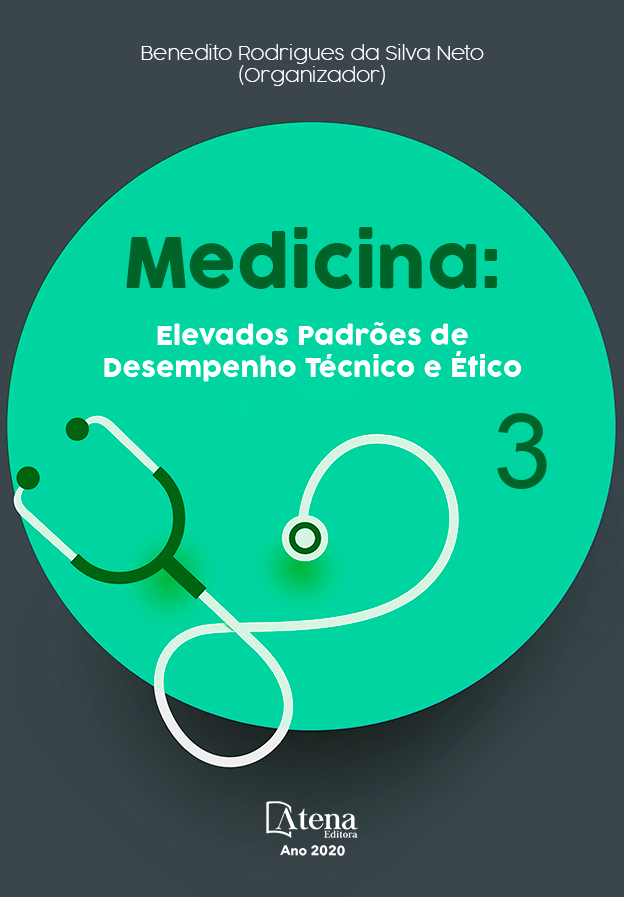
INCIDÊNCIA BRASILEIRA DE INTERNAÇÕES HOSPITALARES POR NEFROLITÍASE NOS ÚLTIMOS 10 ANOS
INTRODUÇÃO: A Nefrolitíase acomete cerca de 10 a 15% da população mundial, tendo maior prevalência nos homens (13%), em comparação às mulheres (7%) (SANTOS, 2017). No Brasil, há dificuldades para obter informações epidemiológicas, pela falta de dados e estudos populacionais imprecisos. De acordo com o DATASUS, em 2010, a urolitíase foi responsável por 0,61% de todas as internações em hospitais públicos (RIELLA, 2018).OBJETIVO: Identificar a incidência das internações hospitalares por nefrolitíase no Brasil durante o período de 2008 à 2018.METODOLOGIA: Estudo transversal dos casos de internações hospitalares ocasionadas por nefrolitíase no Brasil, disponibilizados pelo DATASUS e Scielo, nos anos de 2008 a 2018.RESULTADOS E DISCUSSÃO: De acordo com a literatura, a incidência depende dos vários fatores predisponentes à litíase renal, tais como: idade, sexo, comorbidades como diabetes e hipertensão, dieta desbalanceada e histórico familiar. A partir dos dados compilados, notou-se que a nefrolitíase foi responsável por 788.100 internações hospitalares entre os anos de 2008 a 2018, prevalecendo na região Sudeste com 366.909 casos. O custo médio por paciente foi de R$ 529,92 reais, totalizando, aproximadamente, 417 milhões de reais dos cofres públicos para o Sistema Único de Saúde (SUS) em 10 anos. No mesmo período, a maior incidência ocorreu na faixa etária de 30 a 39 anos (22,6%), no sexo feminino (50,2%) e em brancos (44,9%).CONCLUSÕES: Conclui-se que, no período estudado, houve um aumento do percentual de internações brasileiras ocasionadas por quadro de nefrolitíase, sendo mais frequente a adesão de pacientes do sexo feminino, apesar da patologia ter maior prevalência em pacientes do sexo masculino. O perfil epidemiológico sugere, também, a necessidade de reforço à prevenção e ao conhecimento acerca da enfermidade para a população em geral, com foco na faixa etária dos 30 aos 40 anos, visto que as internações exigem elevados investimentos financeiros do Sistema Único de Saúde.
INCIDÊNCIA BRASILEIRA DE INTERNAÇÕES HOSPITALARES POR NEFROLITÍASE NOS ÚLTIMOS 10 ANOS
-
DOI: 10.22533/at.ed.72320121111
-
Palavras-chave: Hospitalização; nefrolitíase; nefrologia.
-
Keywords: Hospitalization; nephrolithiasis; nephrology;
-
Abstract:
ABSTRACT: Nephrolithiasis is one of the main urgencies related to the urinary tract, with a high recurrence rate, that affects about 10 to 15% of the world population. It has a higher prevalence in men (13%) compared to women (7%)¹. In Brazil is hard to obtain epidemiological information due to lack of data and inaccurate population studies. According to DataSUS, urolithiasis accounted for 0.61% of all public hospital admissions in 2010.² OBJECTIVES: The present study aims to identify the incidence of hospitalizations for nephrolithiasis in Brazil during the period from 2008 to 2018. METHODOLOGY: It was performed a cross-sectional study of hospitalization cases caused by nephrolithiasis in Brazil, made available by DATASUS and Scielo, from 2008 to 2018. RESULTS AND DISCUSSION: According to the literature, nephrolithiasis is a very common pathology in hospitals, which may be asymptomatic or can cause severe acute renal colic, among other symptoms, whose incidence depends on various factors predisposing to renal lithiasis, such as age, gender, comorbidities such as diabetes and hypertension, unbalanced diet, low water ingestion and family history, which includes not only the genetic load, but also eating habits. From the compiled data, it was noted that nephrolithiasis was responsible for 788,100 hospitalizations from 2008 to 2018, prevailing in the Southeast with 366,909 cases. The average cost per patient was R$ 529,92, totalizing approximately 417 million reais from the public coffers of the Health Unic System (SUS) in 10 years. In the same period, the highest incidence occurred in the age group of 30 to 39 years (22.6%), females (50.2%) and white people (44.9%). CONCLUSIONS: It is concluded that, during the study period, there was an increase in the percentage of Brazilian hospitalizations caused by nephrolithiasis, with adherence of the white population and female patients, although pathology is more prevalent in male patients. The epidemiological profile also suggests the need to strengthen prevention and knowledge about the disease for the general population, focusing on the age group of 30 to 40 years, for being the most affected, as hospitalizations require high financial investments from the SUS.
-
Número de páginas: 7
- Layane Xavier Sales
- Dária Veiga de Menezes Neta
- Carla Santos de Lima
- Júlia Guimarães Lima


